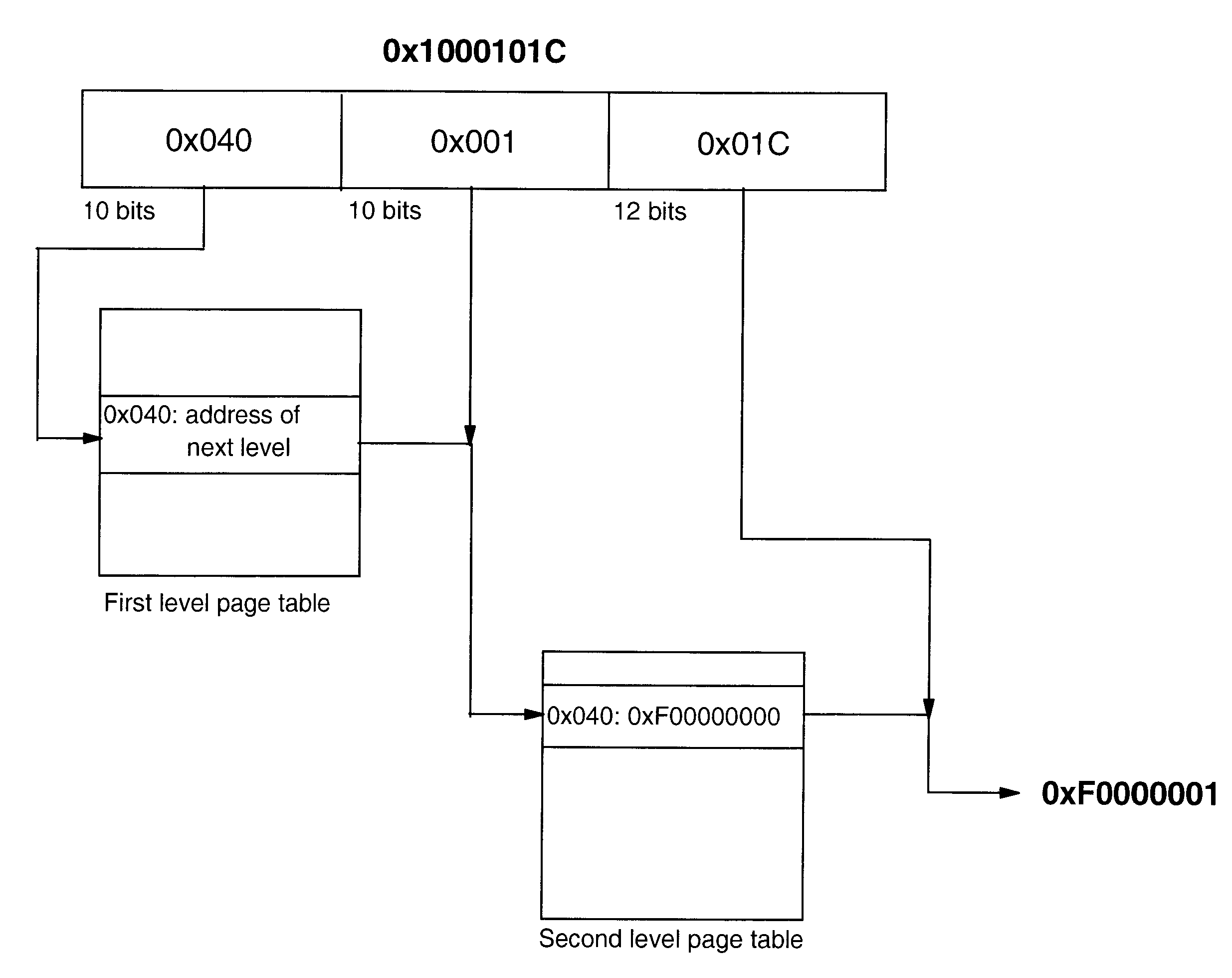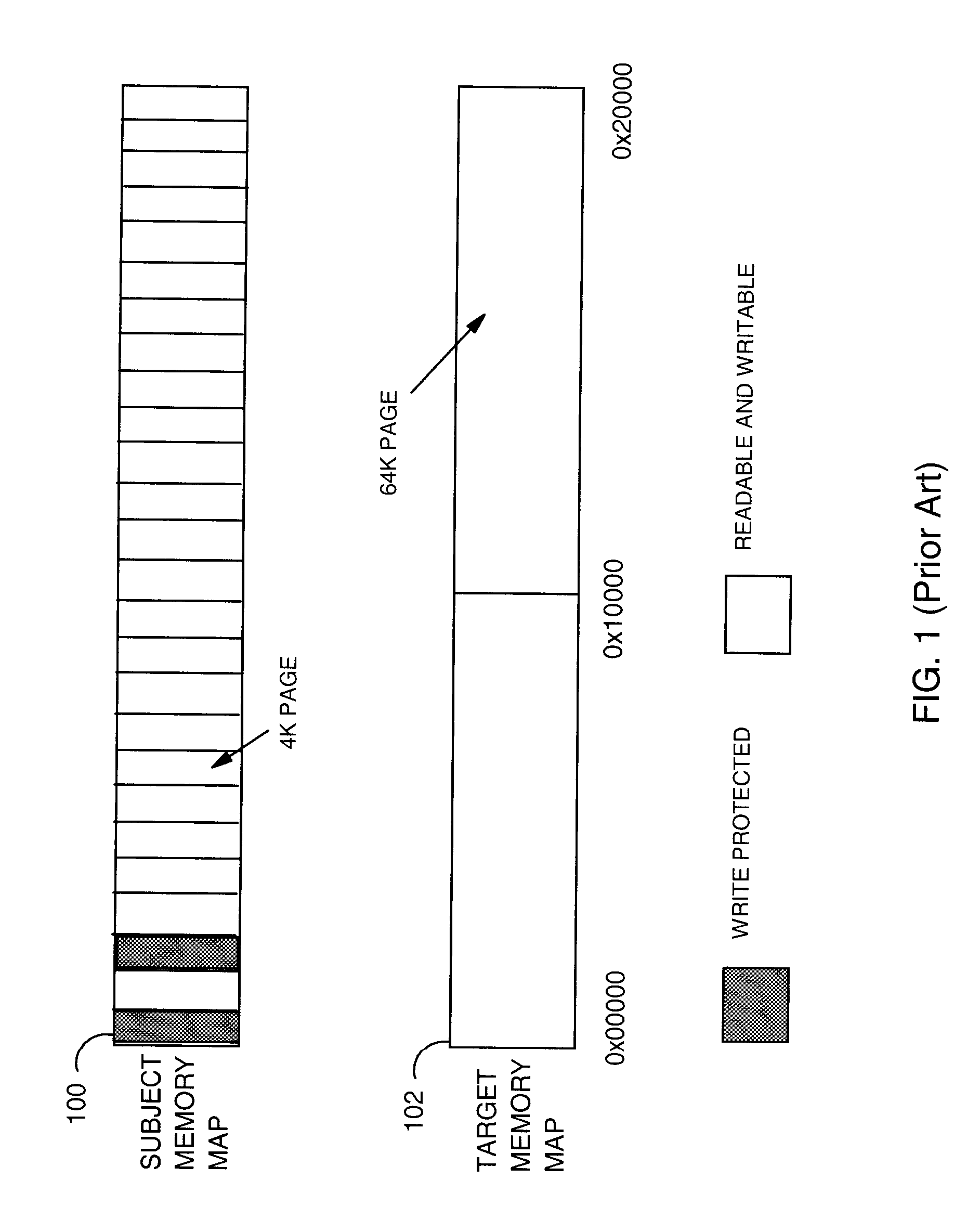Memory Management for a Dynamic Binary Translator
a dynamic binary translator and memory management technology, applied in the field of dynamic binary translators, can solve the problems of page protection not being easily provided, target os may be unable to provide, and page size difference between the two platforms for memory managemen
- Summary
- Abstract
- Description
- Claims
- Application Information
AI Technical Summary
Benefits of technology
Problems solved by technology
Method used
Image
Examples
Embodiment Construction
[0036]Turning to FIG. 5, there is shown, in simplified schematic form, an apparatus or arrangement of physical or logical components according to a preferred embodiment of the present invention. In FIG. 5 there is shown a dynamic binary translator apparatus 500 for translating at least one first block 502 of binary computer code intended for execution in a subject execution environment 504 having a first memory 506 of a first page size into at least one second block 508 for execution in a second execution environment 510 having a second memory 512 of a second page size, said second page size being different from said first page size. The dynamic binary translator apparatus 500 comprises a redirection page mapper 514 responsive to a memory page characteristic of the first memory 506 for mapping at least one address of the first memory 506 to an address of the second memory 512. The dynamic binary translator apparatus 500 additionally comprises a memory fault behaviour detector 516 op...
PUM
 Login to View More
Login to View More Abstract
Description
Claims
Application Information
 Login to View More
Login to View More - R&D
- Intellectual Property
- Life Sciences
- Materials
- Tech Scout
- Unparalleled Data Quality
- Higher Quality Content
- 60% Fewer Hallucinations
Browse by: Latest US Patents, China's latest patents, Technical Efficacy Thesaurus, Application Domain, Technology Topic, Popular Technical Reports.
© 2025 PatSnap. All rights reserved.Legal|Privacy policy|Modern Slavery Act Transparency Statement|Sitemap|About US| Contact US: help@patsnap.com



